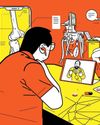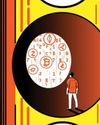
Sharad Devarajan is no stranger to the parallel universe of comics. Twenty years ago, he had come to India from the US (he grew up in New Jersey where his father worked with companies like BMG and Warner Bros) as a licensee for Marvel and DC Comics. He was 20 then and on his first international assignment.
At the time, distributing comic books in India was an uphill task. Not only was it a logistical challenge to get the books across the country, launching superheroes in multiple languages also needed extensive planning and investment.
But despite such hurdles, Devarajan’s Pavitr Prabhakar, the Indian avatar of Spiderman aka Peter Parker that he launched in 2004, did well. It was translated into a number of foreign language editions and published across the globe by Marvel Comics. Indian readers also took a fancy to the village simpleton-turned-Mumbaikar who was jumping rickshaws instead of skyscrapers in New York.
Prabhakar’s success propelled Devarajan to think of something bigger: To go beyond sourcing animation characters from the West and create homegrown superheroes. That’s how Graphic India was born in 2013, with an investment of $2.8 million from private equity firm CA Media for a 33 percent stake, along with a vision of wowing the global audience with Indian characters.
Now Indians are familiar with the concept of superheroes. Generations have grown up on Amar Chitra Katha and the heroics of characters from Indian mythology. In fact, among the first homebred superheroes from India was Nagraj, the king of snakes, which was created by Raj Comics way back in 1986. Devarajan knew it would need a Herculean effort to wrest readership from long-term fan favourites.
この記事は Forbes India の October 2, 2015 版に掲載されています。
7 日間の Magzter GOLD 無料トライアルを開始して、何千もの厳選されたプレミアム ストーリー、9,000 以上の雑誌や新聞にアクセスしてください。
すでに購読者です ? サインイン
この記事は Forbes India の October 2, 2015 版に掲載されています。
7 日間の Magzter GOLD 無料トライアルを開始して、何千もの厳選されたプレミアム ストーリー、9,000 以上の雑誌や新聞にアクセスしてください。
すでに購読者です? サインイン

Home-Cooked Meal Is Now Greatly Valued
The pandemic has also brought with it an improved focus on hygiene, use of technology in dining, rise of cloud kitchens and resurgence in popularity of Indian ingredients

Paytm 3.0 - Reaching Near Breakeven In Two Years
As of 2020, Vijay Shekhar Sharma’s super app for financial services had run up losses in thousands of crores. Now, as digital payments gets yet another boost courtesy Covid-19, he’s hopeful of reaching near breakeven in two years

THE PANDEMIC HAS CAUSED WOMEN GREATER LABOUR PAIN
Covid-19 has shown that women are more likely to face the brunt of job losses than men, and find fewer opportunities when they want to resume. That apart, several have to deal with increased hours of unpaid work at home and even domestic abuse

LEADERSHIP WILL BE ABOUT SEEING THE BIGGER PICTURE
Leaders must not only guard their teams first during a crisis, but also deal with stakeholders with respect and dignity. And apart from pursuing business goals, they should remain committed to our planet and the environment

PHILANTHROPY SHOULD BE HUMBLE, BUT NOT MODEST
Apart from building a flexible and resilient framework for the future, philanthropists, civil society and the government must work in tandem so that every rupee is absorbed on the ground

INTEGRATED HEALTH CARE, TECH WILL DISRUPT SECTOR
While clinical research will get a boost, having a skilled workforce and public spending on health care will be challenges in the near term

DIGITALISATION WILL HELP IN VALUE CREATION
As the pandemic brings technology and innovation to the core of business and daily life, the next decade will see about 150 million digital-first families in India

Industry 4.0: Climate Revolution?
Augmenting sustainability alongside digital capabilities is an economic, competitive and global opportunity for India’s businesses, but regulations need to reflect intent

EV Dream Still Miles Away
Electric vehicles have remained a buzzword in India for years. But not much has moved on ground due to high upfront costs, range anxiety and charging infrastructure

Living Waters
A virus has caused us to scramble for oxygen but our chokehold on the environment is slowly strangling the very waters that breathe life into us. The virus is a timely reminder: We are merely consumers, not producers of life’s breath on this planet